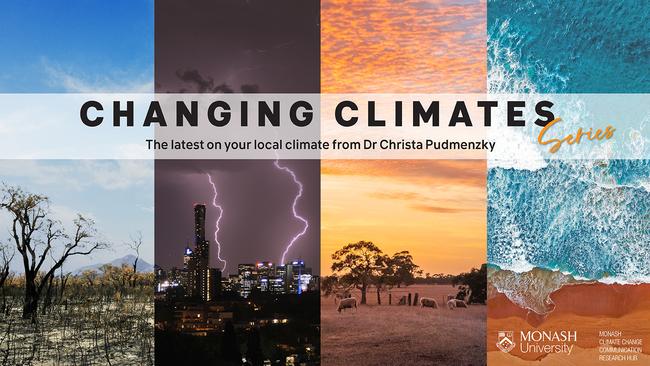Our warming spring climate is disrupting the birds and the bees
Host of Ipswich's Changing Climates series, Dr Christa Pudmenzky, examines how spring is changing. Plus, the impact of rising temperatures on reproduction.

Hyperlocal
Don't miss out on the headlines from Hyperlocal. Followed categories will be added to My News.
Spring is the time we wave goodbye to chilly winter weather, as Mother Earth shakes off the cobwebs to produce the next generation of flora and fauna.
However, the nature of spring is changing and disrupting the lives of many iconic Aussie animals and plants.
Nationally, spring temperatures have been above the long term average for nine of the past 10 years.
The spring of 2020 was the warmest on record for Australia, with both days and nights hotter than average across the country.
And, we're likely to see more of these high temperatures in years to come.
Data suggests that even if we make significant cuts to emissions now, our climate will continue to warm for some time before it starts to stabilise.
For instance, climate projections show that by 2050, the temperature of a typical spring day in Ipswich will likely be around 1.5C warmer than in the 1990s.
The exact level of warming will largely depend on the decisions we make now in reducing emissions.

Warmer spring days tipping populations out of balance
Australia is home to more than a million species of plants and animals, many of which are found nowhere else in the world.
However, spring's evolution towards a warmer climate is putting our wildlife in danger.
Scientists have found that hotter temperatures can make it more difficult for plants and animals to reproduce.
This is because warmer temperatures can cause an uneven split of male and female offspring, and impact the timing of the breeding season.
Unlike humans, for many reptiles and fish, the sex of their offspring is determined by temperature.
Just a couple of degrees can make a difference, with green sea turtle eggs developing into females under warmer conditions, and into males when temperatures are cooler.
On Raine Island, at the northern tip of the Great Barrier Reef, 99 per cent of green sea turtles are hatching as females.
A biased sex ratio over many years can lead to declining populations and make species vulnerable to extinction.
We've seen similar implications for Australia's friendly central bearded dragon where high incubation temperatures are causing male embryos to turn into females.
Timing is everything
The timing of the spring breeding season is also being thrown out of whack by warmer weather.
Animals and plants use environmental cues like temperature to time important events including migration, flowering and breeding.
Birds, for example, often choose to nest in spring when plants begin to bud, and insects are out in force.
They typically lay just one egg a day, and through controlled incubation, rely on all eggs in the clutch hatching on the same day.
Warmer temperatures are causing the first-laid eggs of many Aussies species – including our desert-dwelling zebra finch – to hatch early.
This upsets the normal competition between baby birds and means some do not get enough food to survive.
If our climate continues to warm, we could see much of our iconic Aussie wildlife quickly disappear.
Limiting our carbon emissions will make sure our future generations are still able to enjoy Australia's unique fauna and flora for years to come.
Want more information on how your climate is changing? Check out the last article in this series.
Dr Christa Pudmenzky is a climate scientist at the University of Southern Queensland.
This column is part of a collaboration between Monash University and News Corp to deliver hyperlocal weather and climate information.


